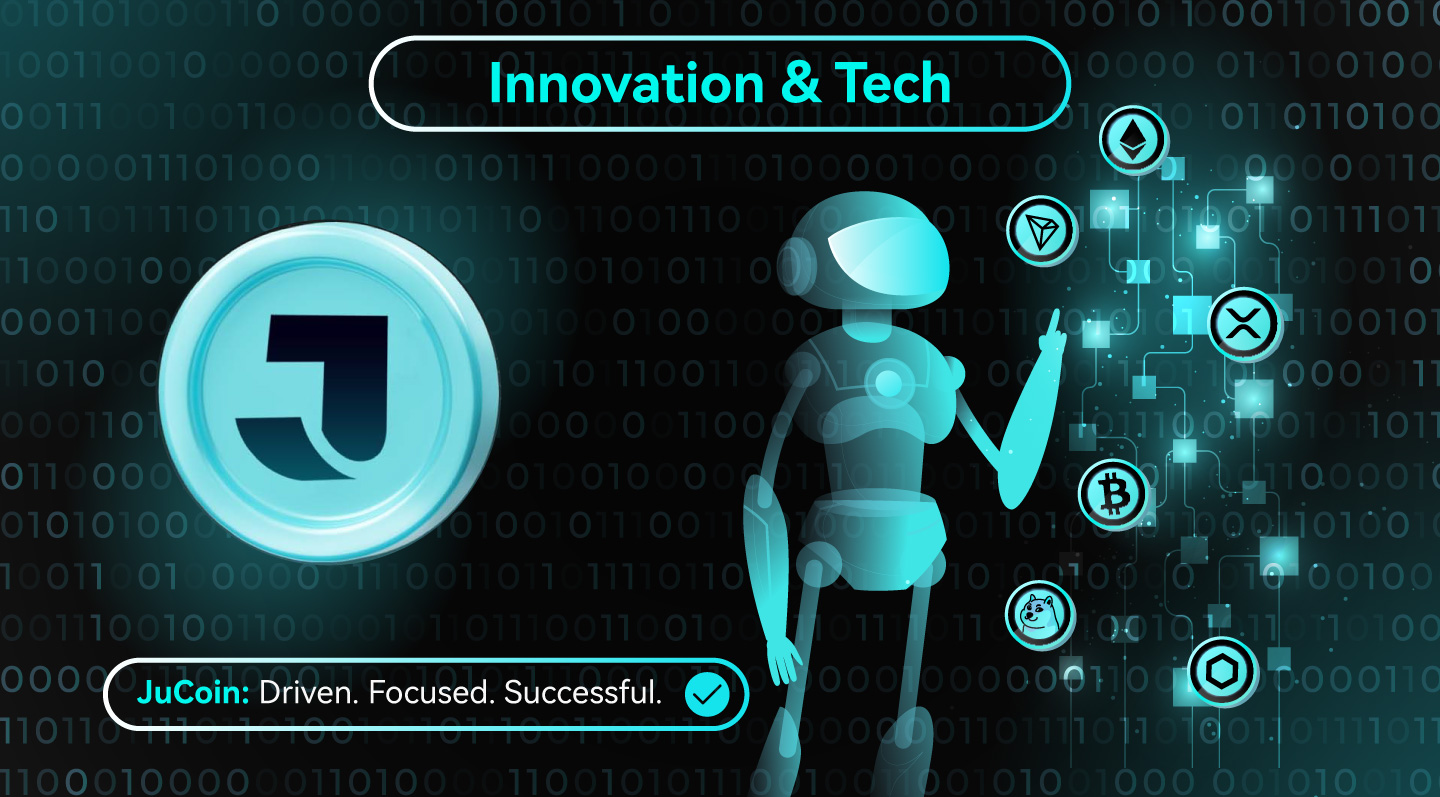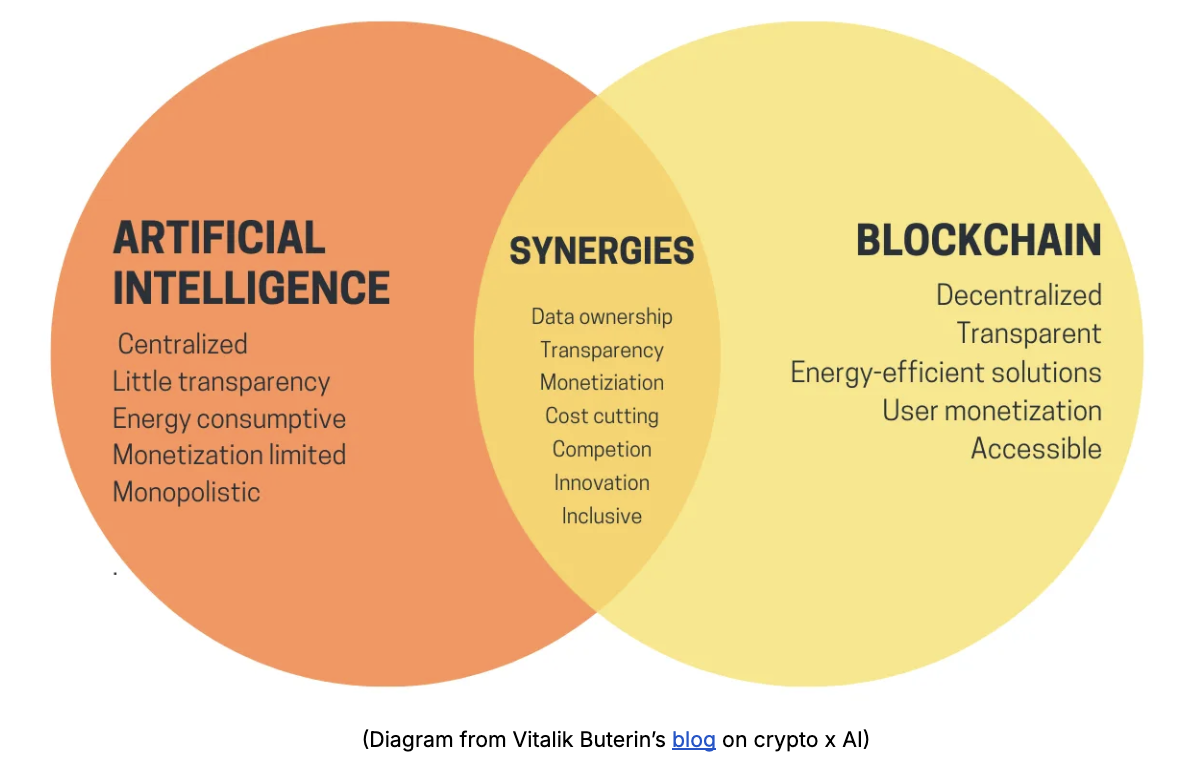
Key Takeaways
- Crypto x AI marks the convergence of two powerful technologies, artificial intelligence and blockchain, resulting in intelligent systems that are verifiable, decentralized, and community-owned.
- The emerging stack includes decentralized compute, agent-based coordination protocols, zero-knowledge machine learning, and tokenized data markets, each addressing limitations in traditional AI and infrastructure.
- This integration is enabling real-world use cases in DeFi, governance, gaming, identity, and analytics, transforming static Web3 protocols into adaptive, autonomous systems.
- Intelligent agents powered by Crypto x AI are actively participating in on-chain operations, from executing trades to managing DAOs, while AI-enhanced interfaces simplify access and interaction for users.
- As adoption grows, the focus will shift to solving challenges around AI verification, ethical alignment, and agent coordination, paving the way for a more open, secure, and programmable intelligence layer for Web3.
Artificial intelligence (AI) and blockchain are two of the most widely discussed technologies shaping the future of digital systems. While AI enables machines to learn, predict, and automate tasks, blockchain provides secure, transparent, and decentralized infrastructure. When these technologies intersect, they open the door to a new class of applications that are intelligent, autonomous, and trust-minimized.
This Innovation and Tech article explores how Crypto x AI is reshaping digital systems by combining intelligent automation with decentralized infrastructure.
What Is Crypto x AI?
Crypto x AI refers to the fusion of artificial intelligence with decentralized blockchain systems. It involves using blockchain to support, verify, or coordinate AI systems, while allowing AI to enhance the efficiency, automation, and adaptability of crypto protocols.
At its core, Crypto x AI includes technologies like decentralized computing, on-chain AI marketplaces, tokenized data exchanges, autonomous agents, and verifiable inference mechanisms. These systems aim to build intelligent infrastructure that is transparent, auditable, and open to all.
The Evolution of Crypto x AI
The concept of decentralized AI emerged as early as 2017, with projects like SingularityNET proposing permissionless marketplaces for AI tools. However, it wasn’t until the rise of generative AI in 2023 and the emergence of large-scale open-source models that the vision gained traction.
In 2024, the launch of Bittensor’s subnet expansion, growth in decentralized GPU networks like Akash, and the popularity of agent protocols such as Autonolas and Wayfinder accelerated industry development. The combined market cap of Crypto x AI-related tokens surpassed $20 billion, and over 50 active projects across compute, infrastructure, and application layers are shaping this fast-evolving sector.
Why Combine AI and Blockchain?
The convergence of AI and blockchain is more than just a combination of two buzzwords, it is giving rise to a new infrastructure paradigm across Web3. AI models offer scalability in automation, prediction, and optimization, but they are often opaque, centralized, and unaccountable. Blockchain, meanwhile, offers transparency, verifiability, and decentralized governance, but it lacks native intelligence or adaptability. By bringing these strengths together, Crypto x AI enables systems that are not only automated but also trustworthy, auditable, and owned by their users.
This synergy is playing out across multiple layers of the ecosystem. Tokenized incentives on blockchain can reward data providers, AI trainers, and contributors, creating a decentralized marketplace for intelligence. Compute platforms ensure AI workloads run in open, distributed networks rather than in the silos of Big Tech. Models trained or deployed through crypto rails can have their integrity verified using on-chain proofs, and their usage governed by DAOs or smart contracts. In short, Crypto x AI is making it possible to build intelligent agents, systems, and economies that are transparent by design, self-improving, and aligned with community interests.
By combining the two, developers can:
- Use blockchain to verify the origin, usage, and ownership of AI models and data.
- Enable tokenized incentives for data contributors, model trainers, and users.
- Build trust-minimized systems where decisions made by AI can be verified on-chain.
- Reduce dependence on centralized AI providers by distributing compute and control.

Core Technologies Powering Crypto x AI
The Crypto x AI landscape is evolving rapidly, with foundational technologies being developed to power the next generation of intelligent, decentralized systems. At the core is decentralized compute infrastructure, which allows developers to run AI models without relying on centralized cloud services. These compute networks are essential for training and inference tasks, especially as demand for GPUs continues to surge across AI and crypto projects. Alongside compute, we’re seeing the emergence of coordination protocols, platforms that incentivize distributed model training, evaluation, and usage through token-based mechanisms. These protocols help ensure openness and scalability while aligning contributors through transparent reward structures.
Another crucial layer is agent architecture. On-chain AI agents can autonomously interact with smart contracts, manage treasury operations, or execute trades, all while operating transparently and verifiably on blockchain rails. As these agents evolve, projects are experimenting with modular design and interoperability across chains. In parallel, advances in zkML (zero-knowledge machine learning) are addressing one of AI’s biggest challenges: verifiability. By enabling AI outputs to be proven correct without revealing sensitive data, zkML bridges privacy and trust in a decentralized context.
Complementing this stack are AI-integrated oracles and modular infrastructure kits, which help developers plug AI capabilities directly into DeFi, gaming, or identity applications. These systems are also becoming more user-friendly, with AI-enabled interfaces helping translate complex blockchain interactions into accessible workflows for less technical users.
Real-World Applications of Crypto x AI
The integration of AI and crypto is already producing tangible outcomes across a variety of sectors. In decentralized finance, AI agents are optimizing yield strategies, monitoring price movements, and responding to real-time market conditions, freeing up human users from having to manually rebalance portfolios or manage risk. These agents operate continuously, executing trades or adjusting strategies based on on-chain data and historical patterns.
In governance, DAOs are leveraging AI for proposal evaluation, sentiment analysis, and vote prediction. These tools help communities make more informed decisions by surfacing insights that might otherwise be overlooked. AI also assists with community coordination, automating tasks like treasury allocations, performance reporting, and delegate discovery.
Beyond finance, data monetization is emerging as a powerful use case. Tokenized data networks allow users to contribute labeled or raw data in exchange for rewards, helping train AI systems while preserving privacy and ownership. This is especially important in an AI landscape increasingly dependent on large, diverse, and up-to-date datasets.
Meanwhile, in the world of NFTs and gaming, generative AI is powering dynamic in-game characters, evolving digital collectibles, and interactive storytelling experiences. These systems can adapt to player behavior in real time, offering immersive and personalized gameplay. In identity and reputation systems, AI-enhanced scoring mechanisms assess trust and behavior across on-chain and off-chain data, supporting use cases in decentralized social platforms and credentialing.
Altogether, these use cases reflect a broader shift from static protocols to adaptive systems, ones that learn, evolve, and act in increasingly autonomous ways.
Notable Protocols and Innovators
Some of the most active and relevant projects include:
- Bittensor (TAO): Powers a decentralized machine learning network with over 30 subnets dedicated to language models, code generation, and multi-modal inference.
- Render (RNDR): A decentralized GPU network focused on high-performance rendering, generative AI, and visual compute workloads.
- Autonolas (Olas): Offers modular agents (“Mechs”) deployed across DeFi, DAOs, and Web3 tooling.
- Modulus: Developing zkML frameworks and verifiable inference modules for smart contract integration.
- Wayfinder: A toolkit and interface layer for deploying AI agents to safely interact with on-chain protocols.
- Datahive: Provides tokenized infrastructure for scraping, labeling, and distributing real-world data for AI model training.
- io.net: A decentralized compute protocol with access to over 300,000 GPUs, including dedicated AI inference clusters.
- Ritual: Building cross-chain infrastructure to host, route, and execute decentralized AI workloads.
- Allora: A predictive intelligence network using staking incentives to refine AI-generated insights for applications in DeFi and beyond.
- World Network: Developing on-chain infrastructure for digital identity, reputation layers, and agent trust scoring.
- Grass: Uses decentralized clients to passively gather internet-scale data to power large-scale AI models.
- Kaito and Vana: Focused on decentralized indexing, search, and analytics, tools critical for organizing and querying AI-relevant on-chain and off-chain data.

Adoption and Activity in the Crypto x AI Ecosystem
Crypto x AI is no longer experimental. Across the crypto ecosystem, intelligent agents and AI-enhanced protocols are operating in production environments. In research and analytics, AI models power dashboards, trading bots, and monitoring tools that synthesize vast amounts of blockchain and market data into actionable insights. These agents are also being used to scout new tokens, identify governance risks, and evaluate smart contract vulnerabilities.
In DAOs, AI systems run 24/7 operations that would normally require entire teams: drafting proposals, reallocating funds, assessing KPI performance, and even negotiating cross-DAO partnerships. In the creator economy, AI powers everything from real-time rendering to AI-generated media used in metaverse events and NFT art drops.
User interfaces are also improving with AI integration. Natural language prompts are increasingly used to interact with DApps, replacing complex dropdowns or multi-step transactions. AI also plays a role in onboarding, helping users navigate wallets, bridging, and trading flows without needing deep technical knowledge.
This transformation suggests a future where agents, not just users, are first-class participants in the crypto ecosystem. As protocols begin designing for AI-native interactions, new markets and behaviors will emerge that reflect a hybrid network of humans and machines.
Strategic Priorities and Open Questions for Crypto x AI
The Crypto x AI space has transitioned from conceptual alignment to practical deployment. Today, AI models are no longer siloed within centralized platforms, they are being trained, deployed, and governed through decentralized infrastructure. Meanwhile, crypto protocols are increasingly embedding intelligent automation, turning static applications into adaptive systems.
Yet, for Crypto x AI to reach its full potential, several critical priorities remain. First is ensuring the verifiability and integrity of AI models. With the growing influence of autonomous agents, it’s essential to build mechanisms that allow humans, and protocols, to verify how models were trained and how decisions were made. Advancements in zero-knowledge machine learning (zkML) and cryptographic proofs will be instrumental here.
Second, agent coordination will become a defining challenge. As the number of on-chain agents grows, protocols will need to implement rules for conflict resolution, delegation, and interaction, potentially requiring new governance frameworks and incentive mechanisms that balance autonomy with accountability.
Third, infrastructure scalability and interoperability must evolve to support real-time AI performance across chains. This includes more efficient compute markets, cross-chain agent execution layers, and modular tooling that lowers the barrier to AI integration for dApp developers.
Crypto x AI isn’t simply about combining technologies, it’s about designing a new class of permissionless, intelligent, and composable digital infrastructure. The road ahead will be shaped by how the ecosystem addresses verification, governance, security, and scalability. What emerges will define how intelligence is built, accessed, and shared in a decentralized world.





